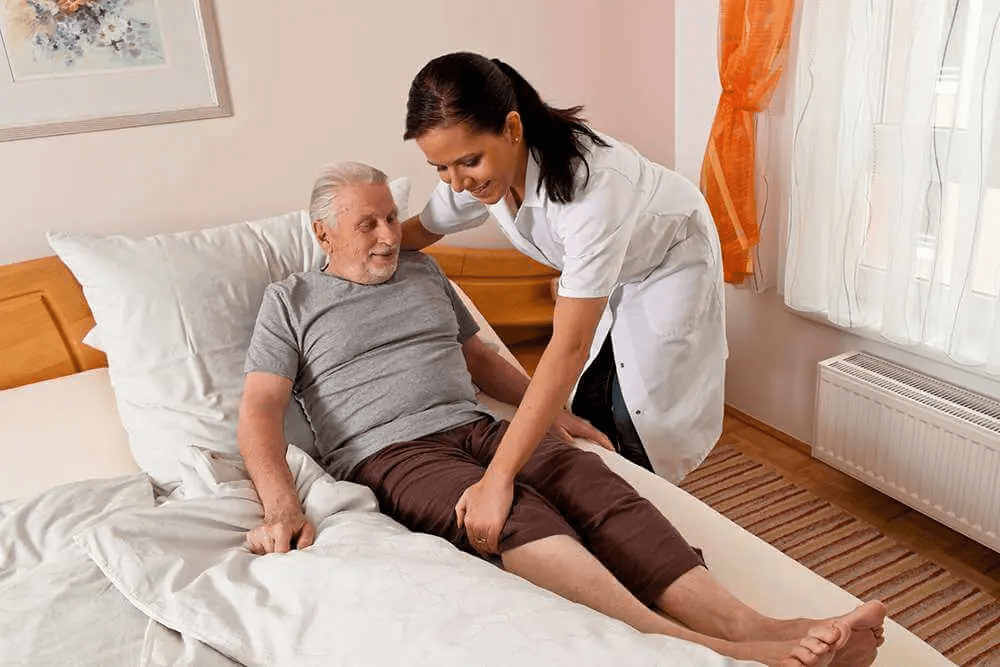Pressure Injury Prevention: A Guide for Optimal Care
Navigating care for residents at risk of pressure injuries can be challenging. In our latest video, we highlighted tips on caring for residents who may be at risk for pressure injuries.

As part of our ongoing commitment to resident well-being, you may have received our recent notice, which outlines our policy exclusion for injuries arising from pre-existing pressure ulcers. According to The International Pressure Ulcer/Injury Guideline, pressure injuries, also known as pressure ulcers, bedsores, and decubitus ulcers, range from closed to open wounds and are classified into a series of four stages based on how deep the wound is. Navigating care for residents at risk of pressure injuries can be challenging. In our latest video, we highlighted tips on caring for residents who may be at risk for pressure injuries. Now, let’s delve deeper into the risks and practical strategies for personal care homes and assisted living facilities to help prevent pressure injuries and provide optimal care for residents.
Understanding the Risk
As non-medical care homes and facilities, it is crucial to admit only those residents whose standard of care can be effectively accommodated by your staff. Pressure injuries are a common concern for individuals who spend extended periods seated or in bed and if left untreated can lead to serious complications. Risk assessments should be done often, and individualized care plans based on residents’ mobility will ensure proper care. It is essential for caregivers and facility staff to recognize the factors that contribute to the development of
pressure ulcers outlined by Mayo Clinic:
- Immobilization: Residents who spend extended periods in the same position, whether seated or lying down, face a higher risk of pressure ulcers. Immobilization can lead to constant pressure on specific areas of the body, restricting blood flow and causing tissue damage.
- Reduced Sensation: Residents with diminished sensation, often associated with medical conditions or aging, may not feel discomfort or pain caused by prolonged pressure. This lack of awareness can delay the identification of pressure injury development.
- Poor Nutrition and Hydration: Adequate nutrition and hydration are fundamental to skin health. Residents with inadequate intake of nutrients and fluids may experience compromised skin integrity, making them more susceptible to pressure injuries.
- Medical Conditions: Certain medical conditions, such as diabetes or vascular diseases, can compromise blood circulation and skin resilience, increasing the likelihood of pressure sores.
Prevention Strategies
Understanding the risk is the first step in effective prevention. Implementing proactive strategies can significantly reduce the incidence of pressure injuries among residents and early intervention is critical.
- Repositioning: Encouraging regular repositioning, ideally every two hours, is key to preventing skin breakdown. Regular exercise and movement can complement the emphasis on repositioning. For residents with limited mobility, investing in low air loss cushions, such as the Roho cushion, can also make a significant difference in prevention. The adjustable air cells provide optimal positioning and stability. While Medicaid will cover such cushions only when skin breakdown has already occurred, facilities and families can purchase Roho cushions at online retailers out-of-pocket.
- Hydration and Nutrition: Facilities can contribute to skin health by prioritizing hydration and nutrition. Regular offerings of fluids and snacks ensure residents receive the necessary support for overall well-being. Implementing comprehensive hydration and nutrition programs ensures residents receive adequate fluids and nutrients for optimal skin health.
- Vigilant Care Practices: Caregivers can use routine activities like showers and incontinence changes to inspect the skin for potential breakdown areas. Train staff to perform regular skin inspections, particularly in high-risk areas like the sacral region, hips, ankles, and bony prominences. This proactive approach allows for early intervention and preventive measures. Keep residents clean and dry; using moisture barrier creams can protect the skin from breakdown.
- Effective Communication and Documentation: Communication with physicians and families is critical in all aspects of resident care. Facilities should have protocols in place for notifying the personal physician if a resident shows signs of increased sedentary behavior, extended bedbound periods, or skin breakdown. Comprehensive documentation ensures a thorough understanding of the resident’s condition. This information should also be consistently shared with their families.
Preventing pressure injuries requires a collective effort. By comprehensively understanding the risk factors and incorporating preventive measures into daily care routines, facilities can create a safer environment for residents, minimizing the occurrence of pressure injuries.